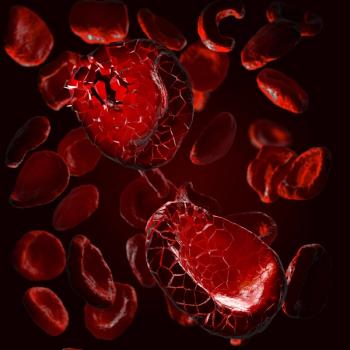
Oncology NEWS International
- Oncology NEWS International Vol 7 No 4
- Volume 7
- Issue 4
Role of Axillary Dissection Debated at European Meeting
PARIS--Although axillary dissection has long been a cornerstone of the surgical management of breast cancer, its role is now the focus of heated debate. Supporters of the procedure claim that it is justified because it provides important prognostic information, guides the choice of systemic therapy, and helps control regional disease. In addition, they say, the morbidity associated with today’s less extensive dissections is considerably lower than in the past.
PARIS--Although axillary dissection has long been a cornerstone of the surgical management of breast cancer, its role is now the focus of heated debate. Supporters of the procedure claim that it is justified because it provides important prognostic information, guides the choice of systemic therapy, and helps control regional disease. In addition, they say, the morbidity associated with todays less extensive dissections is considerably lower than in the past.
However, opponents contend that, for the great majority of breast cancer patients, axillary dissection contributes little essential information and should not influence systemic therapy decisions.
In a session at the 8th International Congress on Anti-Cancer Treatment, Edith Perez, MD, of the Mayo Clinic, Jacksonville, Fla, said that a key issue is whether axillary dissection affects outcome. While conceding that it is uncertain whether dissection improves survival, she pointed out that if dissection is not performed, the disease will recur in the axilla in 10% to 16% of patients.
"The strength of our recommendation for systemic therapy is a little different for the patient with a 1-cm tumor and one positive axillary node vs a patient with a 3.5-cm tumor and five positive nodes," Dr. Perez noted. Knowledge of axillary involvement and the number of positive nodes helps in discussions with patients, "so that the patient understands what the prognosis is without systemic therapy and the relative and absolute benefits of adjuvant therapy," she said.
Dr. Perez advised that the only situation in which axillary node dissection may be skipped is for the patient who refuses to consider systemic therapy.
As for alternatives to axillary dissection, Dr. Perez cautioned that although radiation therapy to the axilla is associated with low morbidity, it carries the risk of potential long-term toxicity. And although more surgeons are becoming adept at performing sentinel node detection and biopsy, she believes it is still too early for this technique to be adopted as standard procedure in all hospitals.
The Mayo Clinic is now planning a study to compare the utility of axillary dissection vs that of immunocytochemical detection of tumor cells in bone marrow in predicting recurrence, she said.
"The question remains whether we need to perform axillary dissection in patients at low risk of recurrence--those with small tumors or those who have been treated with neoadjuvant therapy," said Aman Buzdar, MD, of M.D. Anderson Cancer Center.
Long-term follow-up data from patients who received neoadjuvant chemotherapy at M.D. Anderson have shown that axillary dissection predicts how patients will do following neoadjuvant treatment, Dr. Buzdar said. Emphasizing that the prognosis is grave in patients who do not exhibit substantial nodal downstaging after neoadjuvant chemotherapy, he pinpointed these patients as candidates for more aggressive treatment.
"I would be more than happy if we had some other prognostic feature that could give us reliable information short of nodal dissection," Dr. Buzdar said. However, an M.D. Anderson analysis has shown that the predictive value of both physical exam and ultrasound falls short of that of nodal dissection.
He also sounded a warning about sentinel node detection, noting that the sentinel node may sometimes be negative if the lymphatics are so choked that the metastases do not reach the sentinel node.
Another critical issue is that nodal metastases are present in a sizeable minority (10% to 15%) of patients with tumors less than 1 cm in size. "These patients might not be given systemic therapy without axillary dissection," he said.
Articles in this issue
over 27 years ago
New NCCN Outcomes Data Base Sparks Great Interestover 27 years ago
ODAC Recommends Approval of Two New Taxol Indicationsover 27 years ago
Research into Neuropathic Pain Yields Potential Therapiesover 27 years ago
Vice President Gore Is Featured In Antismoking Radio Spotsover 27 years ago
Genetically Modified Dendritic Cells Enhance Immune Responseover 27 years ago
Research Sets Stage for Possible Autoimmune Therapyover 27 years ago
Proposed Stark II Regulations Spell Trouble for Oncology Careover 27 years ago
Optimal Salvage Therapy for Ovarian Cancer Focus of ICACTover 27 years ago
Ten-Year Study of Survival Rates for Ovarian Cancerover 27 years ago
Virtual Colonoscopy a ‘Kinder, Gentler’ Colon ExamNewsletter
Stay up to date on recent advances in the multidisciplinary approach to cancer.





















































































